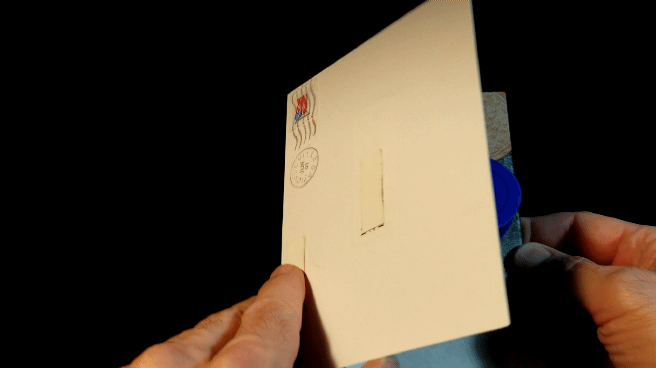Mail call

Idea
This idea came from two pop-ups that never arrived last fall, and this year’s Mother’s Day card that gave us a scare. Some of these take a long time to do and having them go missing is a real disappointment for both Mom and me. Of the over 100 cards sent, two have not made it and were never returned to the sender. I did misaddress one, accidentally using the street name (Redacted Ct.) as the city name also. It went Connecticut, found no city named Redacted, but did end up back here. When the Mother’s Day card was late, I really got worried until it finally showed up, a week after another card that was mailed at the same time.
So what happens when a card goes missing? Does a neighbor get it a throw it away? Is it stuck in the seat cushion of some mail truck? Is it lonely and scared in some dark corner somewhere? Or, has something more sinister happened?
I decided to model the last scenario with the mice posting a letter to their mother, only to have it wantonly destroyed by an evil cat.
Design
Once I had the idea, I had to figure out if I could make a pop-up US mailbox. I knew I could make it as a box with a flat top, but I wanted to make the classic mailbox with the curved top. I knew that would be tricky since curves in pop-ups are rare and combing through my how-to books, I didn’t find anything that could help me out. My technique for figuring out new mechanisms is to start with the final model of what I want, and then see how to fold it flat. My first try with paper did pretty well. I then did two full-size cardstock models to refine it.
The curved part is attached to the top of the mailbox and has a tab that floats freely. The trick to getting it to curve is to have the tab slide into a slot on the back of the mailbox so that when opened that slot keeps the lower part of the tab against the back, forcing it to bend. Below are the parts cut and and decorated. When assembled, the green vertical line on the mailbox will line up with the vertical line on the other part. To help it along, I put a curve in the tab ahead of time.

When closing, one edge of the tab will scrape against the side of the mailbox, which tries to lift the tab out of the slot. To help avoid that the slightly smaller tab is inset a bit. I also used a bone folder to make the side as smooth as possible to reduce friction. The final mechanism works pretty smoothly.
Otherwise, the mailbox is essentially a box made of 90° V folds with half of a top for the flat part below the mail slot. Since the top of the mailbox doesn’t open as fully as the base, I used 86° instead of 90 to avoid it dipping.
The mice delivering the letter were also a bit tricky since the corner they are on folds open then the card is closed as opposed to coming together like the front and rear corners do. So I made my life a bit more difficult by insisting on using the left corner for the mice, but it worked out ok with the tab shown going through the slot and attaching to the inside of the mailbox so they fold flat when the mailbox folds up.
The right side of the mailbox has a door that opens to reveal what happens to the letters posted here.

The cat was the easiest part of the mailbox. It is a parallel fold attached to opposing sides of the mailbox. Its “main” fold is the front corner of the mailbox.
And finally, the mice in the foreground are a simple asymmetric V fold on the main fold. Asymmetry usually make things a little more interesting and let me have one side be at 45° (parallel to the mailbox), and the other size parallel with the front edge of the card.
Cover

This was the easiest cover ever since it’s just like the envelope the card is mailed in. I did draw the stamp and postmark.
Build
- 9” x 6”
- The mailbox was cut from Michael’s cardstock using the Silhouette Cameo, mainly to get the curves perfect.
- The cat is on copy paper.
- The mice in front are from Office Depot Bristol since it is heavier than cardstock but lighter than Strathmore Bristol.
- The base is Strathmore 300 Bristol 100lb, with pastel backgrounds and PrismaColor colored pencils for illustrations.